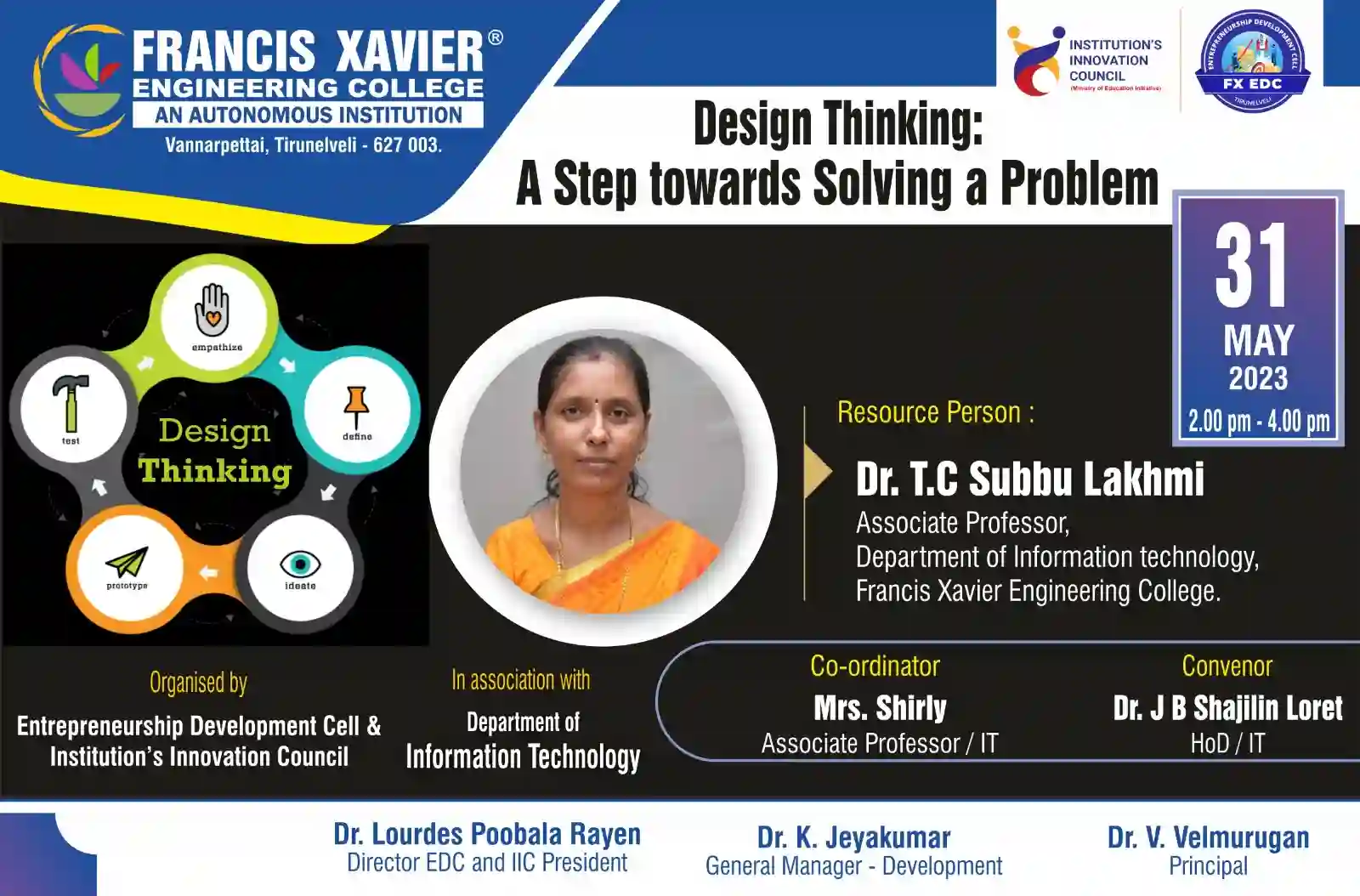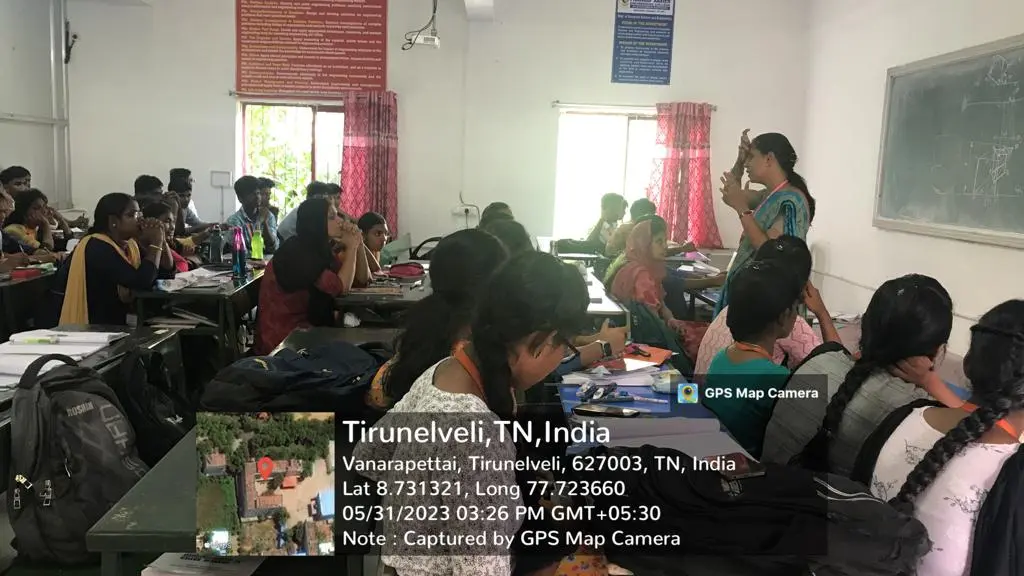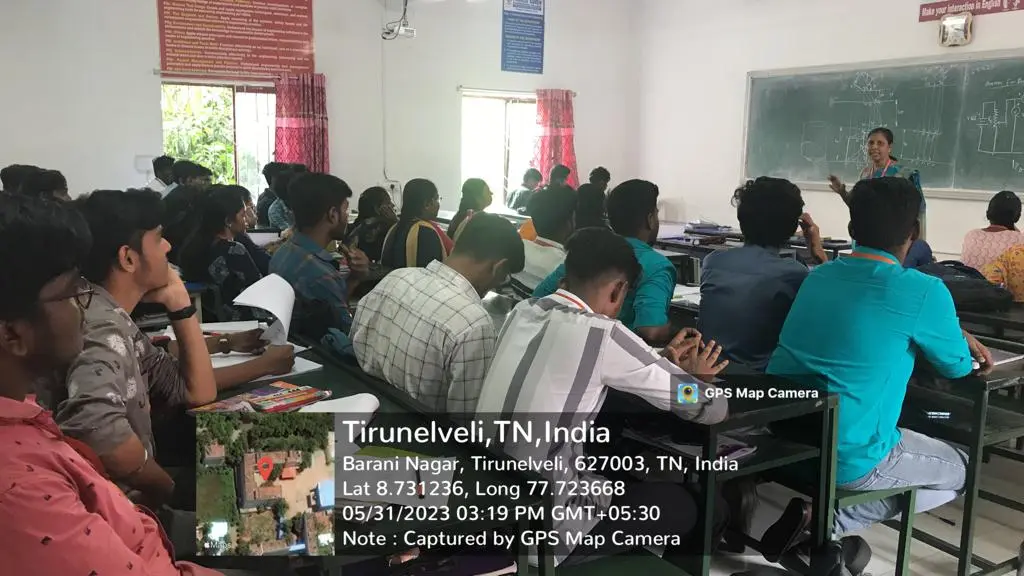
On 31st of May 2023 Entrepreneurship Development Cell and IIC in association with the Department of IT organized a seminar titled "Design Thinking: A Step towards solving a problem". The session was handled by Dr.T.C Subbu Lakshmi, ASP/IT, Francis Xavier Engineering college. 60 students from First year IT and 2 faculties of IT department participated in the program. The program was coordinated by Ms. R.Shirly Myrtle, Assistant professor, Department of IT from 2.00 – 4.00 P.M The seminar aimed to provide insight into the practical aspects of solving a problem and the challenges associated with it. The guest speaker started her talk by introducing the concept of problem solving. She said that there are different models and approaches to problem-solving, but one common framework is the rational approach. The various steps to solve the problems in this model includes the following.
Identifying that there is a problem: This means recognizing that there is a gap between the current situation and the desired situation, and defining the nature and scope of the problem. Defining the goals to be achieved: This means clarifying what you want to accomplish by solving the problem, and what criteria you will use to evaluate the solutions. Exploring potential solutions: This means generating as many possible options as you can, without evaluating them at first. You can use techniques like brainstorming, mind mapping, or research to come up with ideas.
Choosing a solution and acting on it: This means selecting the best option based on your criteria, and developing a plan to implement it. You should consider the pros and cons of each option, and how feasible and effective it is. Evaluating the outcome: This means monitoring the results of your solution, and checking if it meets your goals. You should also reflect on what you learned from the process, and what you can improve for future problem-solving These steps can help you be a more effective problem-solver in any situation.
Design thinking is a type of creative problem solving that focuses on the needs and perspectives of the users. It is a way of thinking and making that keeps the user at the center of everything. Empathize: This stage is about researching and understanding the users’ needs, problems, emotions, and motivations. It involves observing, interviewing, and immersing yourself in the users’ context and experiences. Define: This stage is about synthesizing and framing the insights from the empathize stage into a clear and meaningful problem statement. It involves identifying the main challenges and opportunities for the users, and articulating their goals and values.
Ideate: This stage is about generating a wide range of possible solutions to the problem statement. It involves brainstorming, challenging assumptions, and exploring different perspectives and angles. The goal is to be creative and divergent, without judging or filtering the ideas. Prototype: This stage is about making low-fidelity versions of the ideas to test their feasibility and desirability. It involves building mock-ups, sketches, models, or scenarios that can be quickly and cheaply made and modified. The goal is to learn by doing and experimenting. Test: This stage is about evaluating and refining the prototypes with the users and other stakeholders. It involves collecting feedback, observing reactions, measuring outcomes, and identifying strengths and weaknesses. The goal is to learn from the users and improve the solutions. Design thinking is a flexible and adaptable approach that can be applied to any domain or industry. It can help you solve complex and ill-defined problems in a human-centric way.
The students interacted freely with the resource person and gained knowledge from her. The interaction gave lot of new insights to the students.

